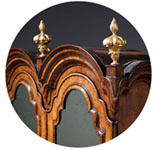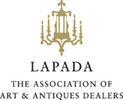18th Century George II Mahogany Miniature Bureau
SOLD
Request Information
Follow Us
18th Century George II Mahogany Miniature Bureau
What came first…. the miniature or the full scale?
This small scale model at just 9” wide dates from the very beginning of the mahogany period in English furniture, circa 1730-1740. The slender bracket foot, the open plate original gilt brass escutcheon to the fall and unusually or extremely early for the period skeleton escutcheons to the drawers.
Some say that miniature pieces such as this were made by the apprentice and I’m sure in some cases perhaps they were, but this piece is fine, with oak-lined dovetailed drawers, box cockbeading which was possibly Japanned and a fully working miniature lock. From a cabinetmaking background myself, it is clear to me that this piece was made with an extremely high level of understanding of the techniques required to produce the full-scale example and therefore, by the master to show potential clients the latest developments in furniture making and design of the period to secure the full-scale commission! How exciting it would have been to know your full-size bureau would be delivered after studying this model!
This piece is most likely London made and possibly Saint Paul’s churchyard. Of course, it could have been made elsewhere but given the date of the piece and quality, I think unlikely.
Condition
Good. This item has been lightly cleaned and waxed with a conservation approach to retain all patination and age. Original condition, Wear consistent with age and use.
Provenance
Literature
Dimensions
H 26 cm x W 24 cm x D 13 cm
PREVIOUSLY SOLD
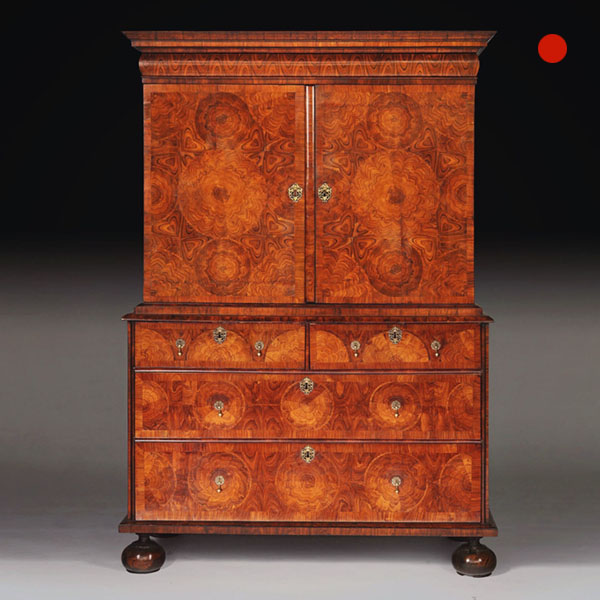
William and Mary Kingwood or ‘Princes’ wood oyster cabinet on chest
When the most expensive timber of the 17th century met Thomas Pistor. There were, in fact, two cabinet-makers called Thomas Pistor, father and son, working for a period at the same time but at different premises. One or both are known to have made furniture of quality for Levens Hall.
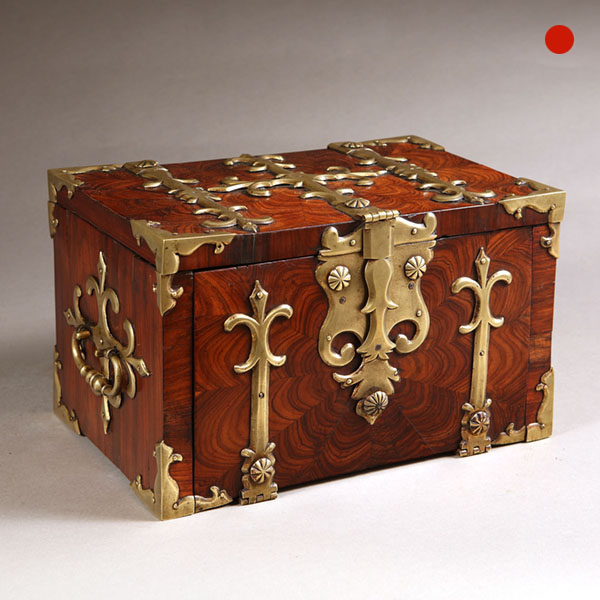
17th Century William and Mary Kingwood Strongbox
A 17th century William and Mary Kingwood strongbox, with gilt brass straps. This strongbox has to be one of the most charming and certainly the smallest example we have encountered, at just 17.5 cm high, 28 cm wide and 18 cm deep. A strongbox of similar merit form and style resides at Burghley House in ‘The 1st George State Room.

William and Mary Seaweed Marquetry Strong Box Firmly Attributed to Gerrit Jensen
A 17th century William and Mary seaweed or arabesque marquetry strong box, with firm attribution to the royal cabinetmaker, Gerrit Jensen, circa 1680-1700, England.
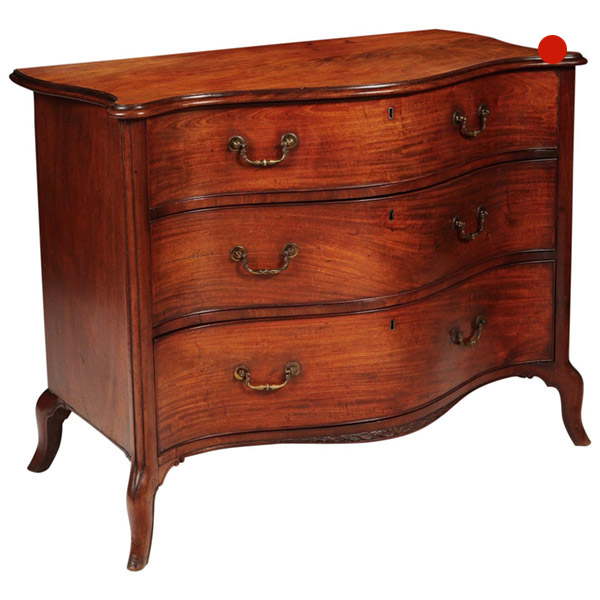
18th Century George III Mahogany Serpentine Chest or Commode
A fine George III mahogany serpentine commode, England, circa 1770. Attributed to Henry Hill, Marlborough. The three graduated drawers retain their original gilt brass handles over a unique carved apron and flanked by moulded angles continuing into the shaped cabriole feet.
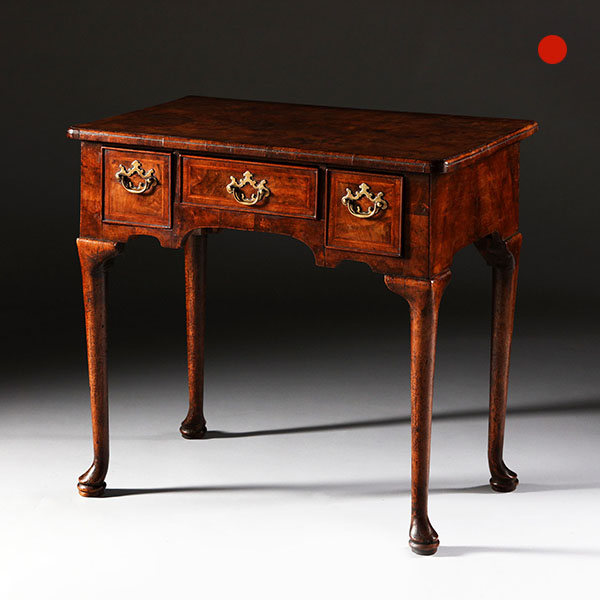
George I Burr and Highly Figured Walnut Lowboy, Circa 1720
George I Burr and Highly Figured Walnut Lowboy Circa 1720. England SOLD Follow UsGeorge I Burr and Highly Figured Walnut Lowboy, Circa 1720. England The feather and cross banded top is quarter veneered with burr walnut and edged with a...
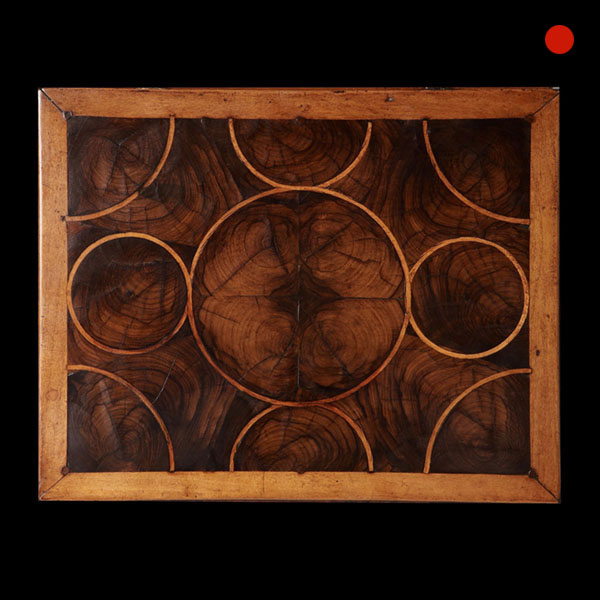
William and Mary Olive Oyster Lace Box
Fabulous 17th-century olive oyster ‘lace box’. ‘Lace boxes’ were popular amongst the middle and higher classes of society from C.1660-1700. The olive oyster box we have for offer here is a lovely original and unusually small example, at just 12″ wide. This form dates from circa 1680-1700.

William and Mary Kingwood or ‘Princes’ wood oyster cabinet on chest
When the most expensive timber of the 17th century met Thomas Pistor. There were, in fact, two cabinet-makers called Thomas Pistor, father and son, working for a period at the same time but at different premises. One or both are known to have made furniture of quality for Levens Hall.

17th Century William and Mary Kingwood Strongbox
A 17th century William and Mary Kingwood strongbox, with gilt brass straps. This strongbox has to be one of the most charming and certainly the smallest example we have encountered, at just 17.5 cm high, 28 cm wide and 18 cm deep. A strongbox of similar merit form and style resides at Burghley House in ‘The 1st George State Room.

William and Mary Seaweed Marquetry Strong Box Firmly Attributed to Gerrit Jensen
A 17th century William and Mary seaweed or arabesque marquetry strong box, with firm attribution to the royal cabinetmaker, Gerrit Jensen, circa 1680-1700, England.

18th Century George III Mahogany Serpentine Chest or Commode
A fine George III mahogany serpentine commode, England, circa 1770. Attributed to Henry Hill, Marlborough. The three graduated drawers retain their original gilt brass handles over a unique carved apron and flanked by moulded angles continuing into the shaped cabriole feet.

George I Burr and Highly Figured Walnut Lowboy, Circa 1720
George I Burr and Highly Figured Walnut Lowboy Circa 1720. England SOLD Follow UsGeorge I Burr and Highly Figured Walnut Lowboy, Circa 1720. England The feather and cross banded top is quarter veneered with burr walnut and edged with a...

William and Mary Olive Oyster Lace Box
Fabulous 17th-century olive oyster ‘lace box’. ‘Lace boxes’ were popular amongst the middle and higher classes of society from C.1660-1700. The olive oyster box we have for offer here is a lovely original and unusually small example, at just 12″ wide. This form dates from circa 1680-1700.
YOU MAY ALSO LIKE
No Results Found
The page you requested could not be found. Try refining your search, or use the navigation above to locate the post.
No Results Found
The page you requested could not be found. Try refining your search, or use the navigation above to locate the post.
